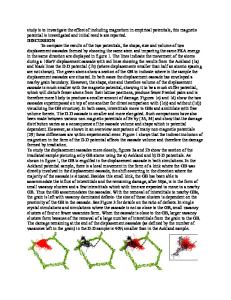The influence of thermal treatment on the chemistry and structure of grain boundaries in inconel 600
- PDF / 2,359,211 Bytes
- 12 Pages / 594 x 774 pts Page_size
- 66 Downloads / 367 Views
RECENTinvestigations into the influence of thermal treatment on stress corrosion cracking of nickel-base alloys have indicated that chromium depletion, carbide precipitation, and trace element segregation may individually or synergistically affect SCC behavior. 1-24 However, a lack of knowledge regarding the grain boundary chemistry throughout the entire thermomechanical processing history of the test sample has led to a great deal of confusion concerning the direction and magnitude of the influence of thermal treatment. Two cases exemplify this point. In 1973, Blanchet et al 2 reported SCC tests on samples of Inconel 600 (with carbon contents of 0,002, 0.04 and 0.06 wt pct) in 350 ~ d e a e r a t e d water in the mill annealed, solutionized and quenched, and sensitized conditions. Copson and Economy did the same in 316 ~ a e r a t e d water with 0.05 wt pct C specimens. 3 Blanchet found relative early cracking of mill-annealed alloys as well as sensitized 0.002 wt pct C material, somewhat longer time to failure of solution annealed specimens, and an absence of cracking in sensitized (pretreated at about 650 ~ alloys with 0.04 and 0.06 wt pct C. 2 The results of Copson and Economy3 show the complete opposite. Samples with carbon levels of 0.05 wt pct showed the greatest susceptibility when sensitized at 677 ~ Solution annealing and quenching resulted in longer lifetimes with mill-annealed samples spanning the entire range of lifetimes. G. S. WAS, formerly Research Assistant, Nuclear Engineering Dept., Massachusetts Institute of Technology, is now Assistant Professor, Nuclear Engineering Dept., The University of Michigan, Ann Arbor, MI 48109. H. H. TISCHNER, formerly Postdoctoral Associate, Department of Materials Science and Engineering, Massachusetts Institute of Technology, is now with KSB-Peguitz, D-8570 Peguitz, Federal Republic of Germany. R. M. LATANISION is Associate Professor, Department of Materials Science and Engineering, Massachusetts Institute of Technology, Cambridge, MA 02 t39. Manuscript submitted October 9, 1980. METALLURGICAL TRANSACTIONS A
Today, none of the three US steam generator manufacturers use tubing given the same thermal treatment. Combustion Engineering uses mill-annealed tubing, while Westinghouse subjects the tubing to an overaging thermal treatment, 25and Babcock & Wilcox operates its steam generators with stress-relieved tubing. 26 The origin of the differences in test results and manufacturers' decisions can be traced to two practices. First, the metallurgical condition of the material in question is often ill-defined from the very first step of the thermomechanical process. The same thermal treatment given to samples in different metallurgical conditions may result in radically different microstructures and, hence, corrosion susceptibility. Second, the indiscriminate use of terms such as "mill-annealed" and "sensitized" adds to the confusion because of their ambiguity and vagueness. Thermal Treatment Effects Three important processes occur during aging of Inconel 600 at temperatu
Data Loading...










